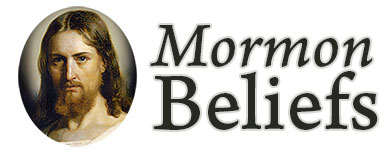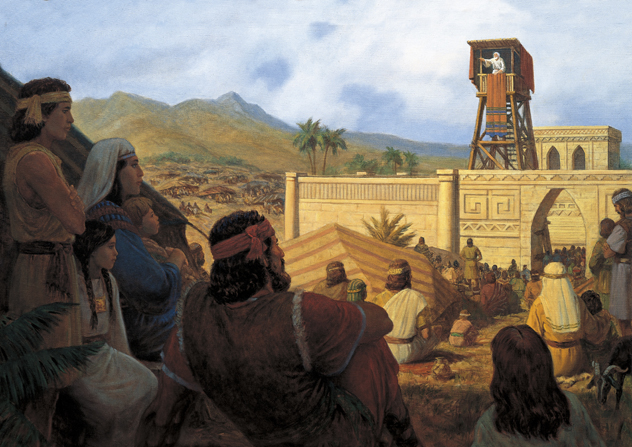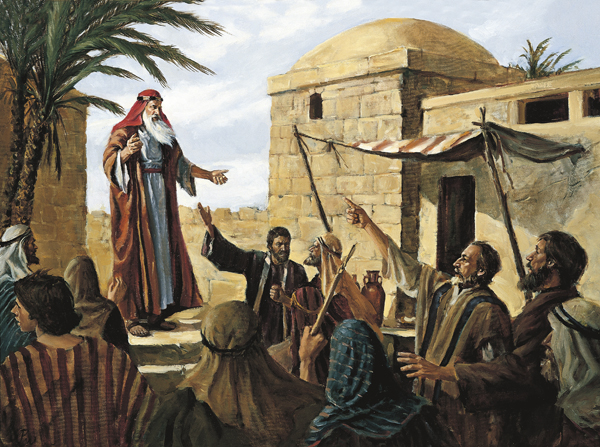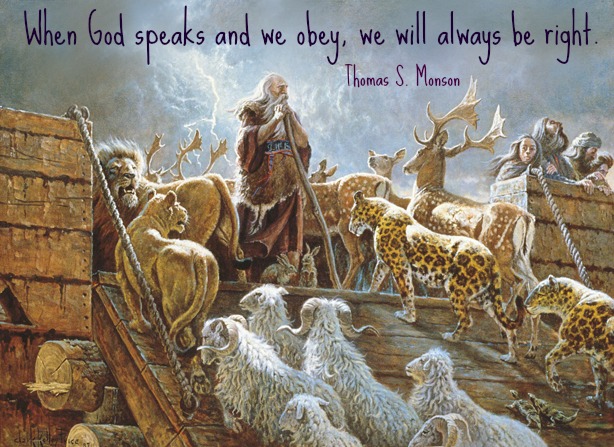This article by Dustin Phelps and Loren Spendlove was originally published on the blog Happiness Seekers.
So, here’s the deal: a reality of being a Latter-day Saint in the 21st century is that each of us has either personally struggled with a crisis of faith or we have painfully watched people close to us struggle.
Many people want us to believe that this is a Mormon phenomenon. But it isn’t. Far from it.
A wave of secularism is indiscriminately mounting an offensive against all religion, doing everything it can to undermine faith in the authority of scripture, the calling of prophets, and the existence of God. Religions everywhere are buckling under the pressure and actually, according to the data, the LDS Church is doing a better job retaining members than other religions.
But even if that is the case, we still can’t help but ache for close friends and family members (or ourselves) who face a barrage of doubts.
This article is a humble attempt to turn the tables on the doubt that so many members struggle to overcome. We seek to reach the members who desperately want to believe but no longer know how they can.
In this article we use a logical approach to overcoming doubt. And you may wonder why. The reason is simple. People who seriously struggle with doubt have come across information that they find to be both disturbing and convincing. They often feel so compelled by the logic of it all that exercising faith in the restored Gospel seems about as foolish as exercising faith in a unicorn.
In a manner that may be difficult to understand, they have lost the ability to exercise that particle of faith. You see, while faith precedes testimony, you still need a reason to exercise your faith. That’s why you’ve never tried an experiment of faith on the Greek gods or the Hindu ones. You couldn’t sincerely do so even if you wanted to. And that’s because your reason tells you that it would be silly to even think about it. And it is perhaps because we need a reason to exercise our faith that Peter admonished us to “be ready always to give an answer to every man that asketh you a reason of the hope that is in you.”
So, for those who may need a couple of reasons to exercise faith: We’ve got some.
And just to be clear, the evidence included in this article is not the type of ‘archaeological’ or ‘DNA’ evidence that is never really conclusive. We should avoid that type of evidence because it can quickly be invalidated by new evidence.
Instead, we focus on textual evidence because it isn’t refutable and you don’t have to be an expert to inspect it for yourself.
(Note: there are many links throughout this article. It would be best to read the entire article and then go back to the links you were interested in later.)
1. The Money System Described in the Book of Mormon Is Distinctly Ancient
We’ve all probably wondered about the seemingly random description of the Nephite monetary system that assigns value to various weights of gold and silver.
One of the interesting things about this money system is that if Joseph were a fraud, he’d have to have an uncanny understanding of money systems in the ancient world.
You see, before the development of minted coins, monetary systems operated on a very different logic. What works for modern money systems today simply doesn’t work well for systems that rely on weights of precious metals.
For this reason, the most advanced ancient civilizations, such as the Egyptian nation, developed a system of standardized weights based on what you call a binary methodology. (Binary systems rely on values that double at each increment.) It’s a system that isn’t exactly intuitive to the modern mind, but it was very innovative for ancient societies.
Another interesting thing about these ancient systems is that their arithmetic was not developed far enough to understand many of the fractions we use today. They could only think in terms of halves (i.e. 1/2, 1/4, 1/8, etc.). And this was reflected in the fractional weights that these civilizations implemented.
Stunningly, the monetary system described in the Book of Mormon uses the same logic as these ancient money systems. The Nephite monetary system is binary, uses the same fractions, and reflects the same overall organization. Click here for more details.
So, how did Joseph Smith know how to construct an ancient money system, especially one so different from his own? Are we to believe that of the few books available to him, one happened to be on the intricate dynamics of ancient money systems? Or that he happened to guess his way to a system that looks an awful lot like the Egyptian system but with careful improvements?
Seems like it would take quite a bit of faith to believe that.
2. The Book of Mormon Is Written from Cover to Cover Using Ancient Hebraic Literary Forms
By now, many LDS members are aware that the Book of Mormon contains something called parallelisms. However, few realize the full extent to which the Book of Mormon uses these poetic forms nor the shocking implications that they have.
First, for those who are unfamiliar: parallelisms are a poetic style that is a defining attribute of Hebrew writing, and the Old Testament is replete with them. The Book of Mormon reflects these same poetic structures from beginning to end and uses them in a distinctly Hebrew manner.
Critics often select a simple parallelism in the Book of Mormon and say, “Well, that could have been an accident.” And they are absolutely right. Even when I look back at my own study journal I see various forms of simplistic parallelisms in my writing.
But there is a difference between the simplistic and haphazard parallelisms that show up in all literature and writing, and the type of systematic and intricate parallelisms used by the Hebrews in both the Bible AND the Book of Mormon.
For example, we wouldn’t be surprised to see occasional parallelistic patterns such as:

OR even a chiasmus (a type of parallelism) such as:

But we find much more than that in the Book of Mormon. For example, all of Alma 36 is one long chiasmus—we’re talking about a 34 part chiasmus. The letters below represent the chiasmatic pattern found in Alma 36:

…that was no accident. And you would not believe the skill with which many of these parallelisms are crafted and the additional meaning that they convey. Alma 36 is one of my favorites. The way Alma uses chiasmus to convey his story of conversion is simply beautiful. To learn more about that, click here.
And not only are many of the Book of Mormon’s parallelisms quite complex, but they draw from over 20 distinct styles, and they form a network of thousands of parallelisms. To read more about how the various types of parallelisms operate, and to see a partial list of the Book of Mormon’s parallelisms, click here.
Now, to be sure, critics try their best to undermine the strength of this evidence. To see the arguments they make and why they are extremely flawed, click here.
Critics don’t realize two main things: 1. The complexity and the sheer extensiveness of the parallelisms in the Book of Mormon prove that they are not mere accidents. And 2. If Joseph knew what he was doing (and the evidence shows he couldn’t have known what parallelisms are), then this would only complicate the theory of fraud.
Why? Because if the Book of Mormon was a fraud, then Joseph had to memorize his invention and recite it to his scribes. Reciting an extensive network of parallelisms would make that task all the more difficult.
Also, if Joseph went to all the trouble to come up with thousands of parallelisms, why not say something to someone? Why not plant this piece of potentially exonerating evidence with Martin Harris or Oliver Cowdery? Why would a conman not present the evidence that may have stopped his persecutors in their tracks?
It sure seems like it would take a lot of faith to believe the Book of Mormon is just a fraud.
3. An Archaic Rhetorical Device in the Book of Mormon Reveals Something Extraordinary
Have you ever heard of something called enallage?
Enallage is a rhetorical device that uses grammatical inconsistencies to make a point. A distinct and rare form of enallage called “distance-to-proximity” was an important part of the rhetorical repertoire of Hebrew prophets and Book of Mormon leaders.
“Distance-to-proximity” works by switching between pronouns in order to transition between a sense of distance and directness.
This tool has come in handy for Biblical and Book of Mormon prophets and leaders who want to really drive a point home. You see, when a prophet uses the second person (the direct approach), people get angry and defensive. That’s why people had a tendency to stone prophets who went about saying, “You need to repent.”
But if a prophet uses the 3rd person and later transitions to the second person, it creates an initial distance wherein the audience doesn’t feel personally attacked, and they can more rationally evaluate the message being taught.
A great Biblical example of this can be found, here.
In the Book of Mormon, Limhi uses the technique in a very subtle manner. He wanted his people to understand that they were in bondage because of their sins. Now, he could have just told the people how evil and abominable their mistakes were, but they may have resisted that message because of pride.
So instead, Limhi creates temporary distance by using the pronouns “they” and “them,” instead of “ye” or “we”, while still referring to the people he is addressing. By doing this, the people are able to evaluate their wickedness and the consequences of their sins at a safe distance. And then Limhi transitions back to “ye” in order to help the people take responsibility for those sins. Check out the details on how he does that, here.
This “distance-to-proximity” device is so subtle that if the message isn’t intended precisely for you, you don’t even notice it much less appreciate it. As the outside observer, everything you read is distant.
Enallage only affects the people who are being entreated.
And that’s where things get interesting. Enallage is a rhetorical device that reveals who an author’s audience really is. You employ enallage when you feel acutely aware of the ego or sensitive feelings you have to work around. So, enallage demonstrates that Limhi’s speech was not written by someone thinking of a modern audience. Instead, the person who crafted that speech was acutely aware of the needs of Limhi’s people and particularly concerned about them understanding the message.
For the Book of Mormon to be a fraud, we would have to believe that Joseph was far more careful about the minutest of details than critics have ever considered. And if the Book of Mormon were just a fraud, why care about minute details that 19th century Americans never would have picked up on? (Even modern readers don’t pick up on it.)
And again, if Joseph was aware of the skillful way he crafted these little details…why not plant this evidence somewhere?
4. Hebraisms Fill the Book of Mormon
We won’t belabor this point since this article is already getting a little long, but we want to introduce you to Book of Mormon Hebraisms and point you in a few directions to learn a bit more about them.
But first off, when we say that the Book of Mormon is filled with Hebraisms, we mean that it is written in a distinctly Hebrew manner. We would expect this because while the Book of Mormon was written in a “reformed Egyptian,” we also learn from Mormon that the native tongue for Nephi and other Book of Mormon prophets was Hebrew (or a derivative of it). So, even though the gold plates were not inscribed with Hebrew, the thoughts, teachings, ideas, and history were originally conceived in Hebrew. Thus, we would expect for uniquely Hebrew indicators to be found in the Book of Mormon (just as they are found in the Bible).
Look here, here, and here for information that dives deep into the countless Hebraisms that scholars have discovered in the Book of Mormon.
Now, critics argue that Joseph could simply be mimicking the Biblical style since many of these Hebraisms also show up in the Bible. What they do not acknowledge is that many of the Hebraisms in the Book of Mormon don’t show up in the Bible or were so heavily weeded out by the translators, that they would be difficult to extract from only the English version. And yet these Hebraisms still show up in the Book of Mormon. EXAMPLE= names
But even without this, the extensiveness to which the original Book of Mormon manuscripts reflect a Hebrew culture and mode of expression is simply stunning. For critics to argue that Joseph merely mimicked the Bible, they will have to explain where a 24 year old, impoverished farm boy obtained the sufficient time to have studied and understood the linguistics of the Bible so well that he was capable of the Hebraistic consistency we find in the Book of Mormon. DREAMED A DREAM
5. The Context Makes a Book of Mormon Fraud Very Unlikely
Critics will often say that it isn’t so surprising that Joseph Smith could have invented the Book of Mormon. “Just look at Lord of the Rings or any number of other complex fictional works,” they say. But these claims ignore the circumstances surrounding the Book of Mormon (among many other things).
Consider the following:
#1: When the manuscript was completed, Joseph Smith was only 24 years old and most of his life was spent working on the family farm or engaged in hired manual labor.
We’re not saying that these circumstances make it impossible for Joseph to have invented the Book of Mormon, but they do make it much less plausible. After all, because of his young age and his family’s poverty, Joseph hadn’t had much time to devote to academia. He may have read what few books were available to him, and his father may have home schooled him; but as a poor youth, most of his life was spent under the constraints of manual labors.
When would he have had the time or energy to come up with the plot, the religious teachings, and all the little literary treasures found in the Book of Mormon? And how would he have known enough to even be capable of creating those things?
#2: Even if he found time to come up with the Book of Mormon, it would have been extraordinarily difficult for Joseph to properly create notes on his ideas or the organization of the book.
Not only are authors of fiction generally much more educated and older than Joseph Smith, but they also have the luxury of a private space where they can write out ideas and begin to organize the plot and details of their books. They also have access to paper and something to write with.
Not exactly so for Joseph. Until near the beginning of the translation process, his access to a private space or parchment would have been pretty limited. Even if he was able to purchase paper before the translation process, he would have needed to go into the woods to write in privacy—and not with a ball point pen but ink and a quill. Picture what that would have looked like.
#3: Unlike other great authors, Joseph would have needed to not only write his book but also memorize it and then recite it to his scribes.
If Joseph were a conman, he really complicated things for himself by not just putting the manuscript together alone. Instead, he dictated this huge and complex book to scribes under circumstances that gave him no access to no notes (i.e. he needed to at least appear to be translating). And this would entail memorizing and reciting the Book of Mormon to his scribes. Tolkien didn’t have to do that.
Things get even more complicated when you realize that all of those parallelisms could get messed up if he wasn’t reciting his invention nearly word for word. The money system would have been nonsensical if he had remembered something incorrectly. Keeping all the little literary treasures of the Book of Mormon straight in addition to memorizing 531 pages of text surely borders on the impossible (given all the other circumstances).
Bottom line: We should never say that critics don’t know how to exercise faith because it takes a tremendous amount of faith to believe that Joseph Smith was just a conman.
Conclusion:
When it comes down to it, these evidences are compelling, but they still don’t prove anything. The same is true of the reasons that people doubt; they may be compelling, but they still don’t prove anything.
A strong case could be made to believe or disbelieve if you only use one-sided evidence. However, when you consider the evidence on both sides, in a holistic manner, you quickly see that believing and not believing are BOTH decisions of faith.
So, for those who struggle with doubt, the question becomes: in what will you choose to exercise your faith? Because both of the paths before you will require faith.
Which is perhaps why Alma says that “even if you can no more than desire to believe…let that desire work within you.” To some degree, what we exercise faith in comes down to what our soul desires…whether or not we desire life, light..etc. Which is also why so many who struggle with doubt hang in there and fight for their faith.
It is also for this reason that some who doubt and leave the Church are unreachable: they don’t want the Restoration to be true, they don’t want God to exist. Deep down in their souls, they are repulsed by Eternal Life (or at least by what Eternal Life requires).
But President Uchtdorf made clear that many fall into the former category, instead of the latter. It is those people we hope our article will reach and help.
So, know this: the 21st century presents new challenges. Many members have been confronted with only one side of the evidence. We understand that this could make it very difficult to truly and sincerely continue a journey of faith in the restored Gospel—regardless of where your heart is at. So, we hope that this article gives you tools that will help you to make the choice that is truly in tune with the desires of your heart.
And we bear our own testimonies of the Book of Mormon, the restored gospel, and Jesus Christ. We are both very familiar with Church history and the reasons that individuals come to doubt, and yet we still believe—in Christ and His Church.










